
Have you been infected with Orchidmania? Would you like to try a new way to appreciate these amazing plants? Here is a step-by-step tutorial how to paint an orchid in watercolor.
You will need: an orchid, watercolor paint, different sized paint brushes, a cup of water, paper towels, watercolor paper (90 lbs. or heavier), masking tape, and a drawing board/surface

1. Observe your subject. Notice shapes, sizes, and colors of the stem and parts of the flower.
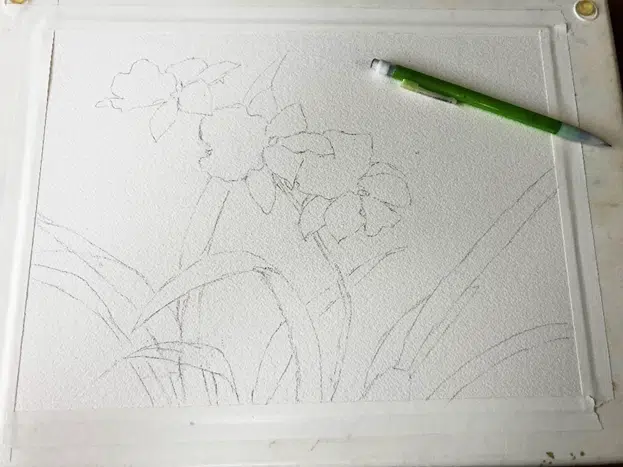
2. Tape your paper to your board along all edges. Then lightly sketch the orchid in pencil so it fills your page. Don’t get caught up in too many details, and try not to erase!
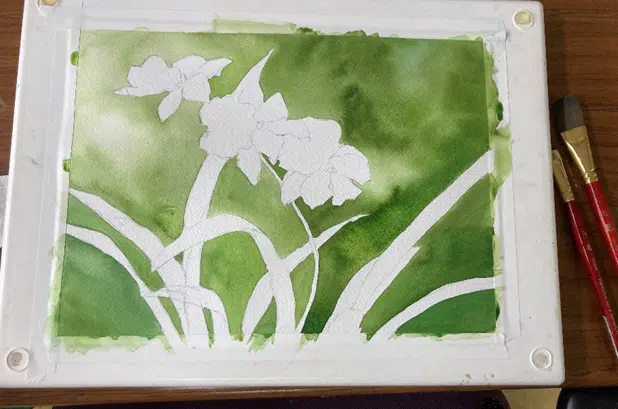
3. Wet your background only (leave the orchid dry) to paint your wash. Wet your largest brush, mix your background colors, and let them bleed together to create a soft, tie-dye look. Let it dry.
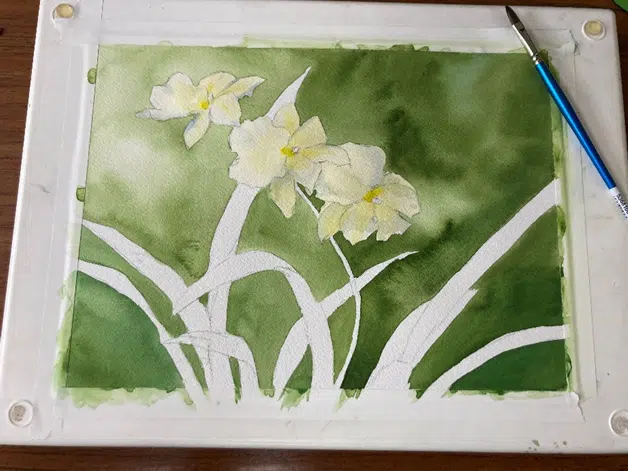
4. Use a slightly smaller brush to paint your orchid flower with first. Work only with your lightest colors, and wet only the areas where you will allow the paint to blend. Let it dry.
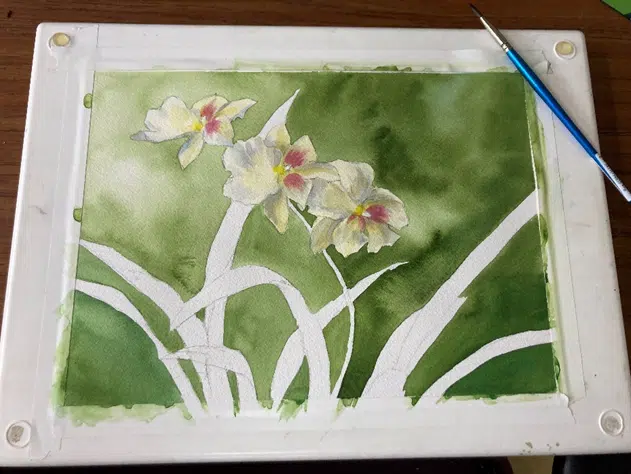
5. Your second layer of colors should be bolder. Re-wet only the areas you want paint to flow into. Try to add darker colors for shadows, but try not to paint over your lightest highlights.
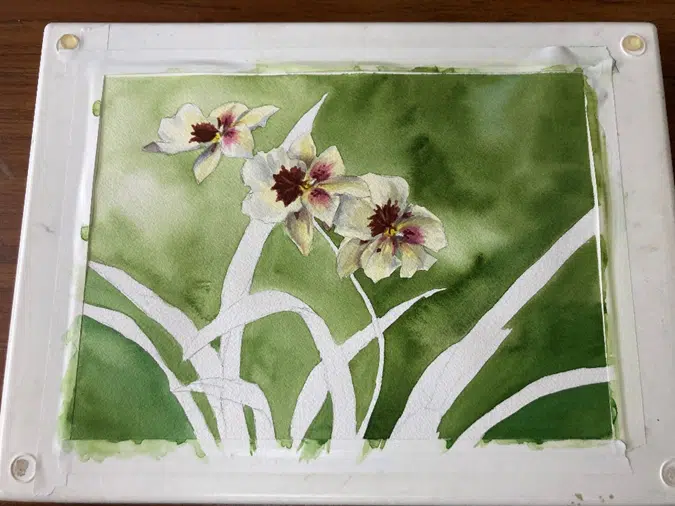
6. Use your smallest brush for the third layer of your orchid flower. Here you will only add a little water to the paint for intense color. This is where you will add the final details to the flower.
7. Once your flower is dry, you can paint in the leaves and the stem in a similar way to how you did the petals.
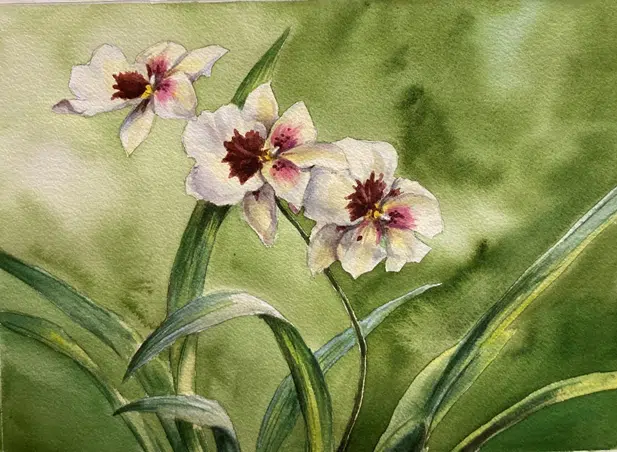
8. The last step is to look over your orchid for any special touches you want to add. Proudly sign your name in the lower right hand corner, and decide on which wall in your home you want to hang your masterpiece.
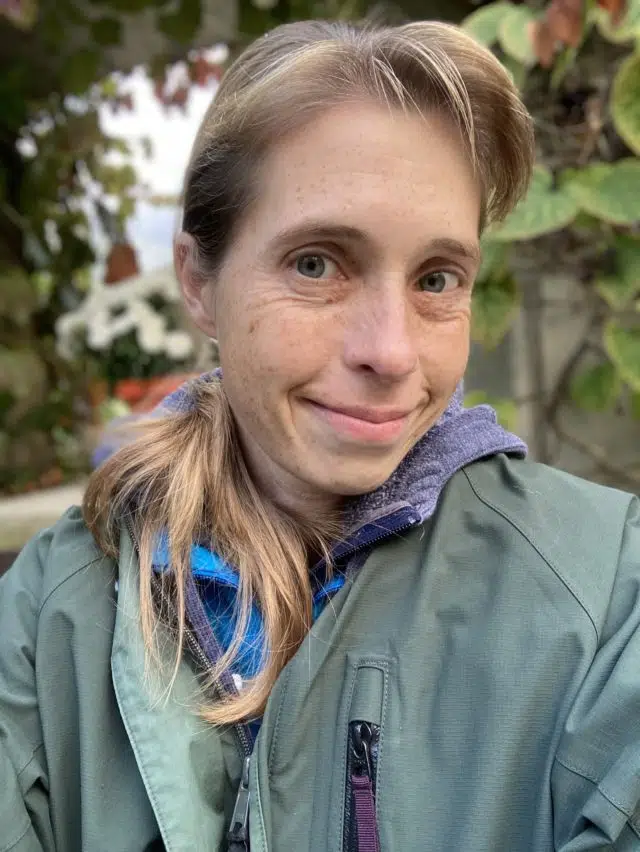
Stefanie Verish
Horticulturist
Stefanie is a new employee to CBG, but she has been working with plants for over 20 years. Her career as a naturalist with Cleveland Metroparks, her horticultural experience in landscaping for the Village of Valley View, and her freelance artistry have nurtured her love for gardening and design. She is especially passionate about utilizing native plants as integral components for local gardens.













